Презентація на тему «Roman Britain»
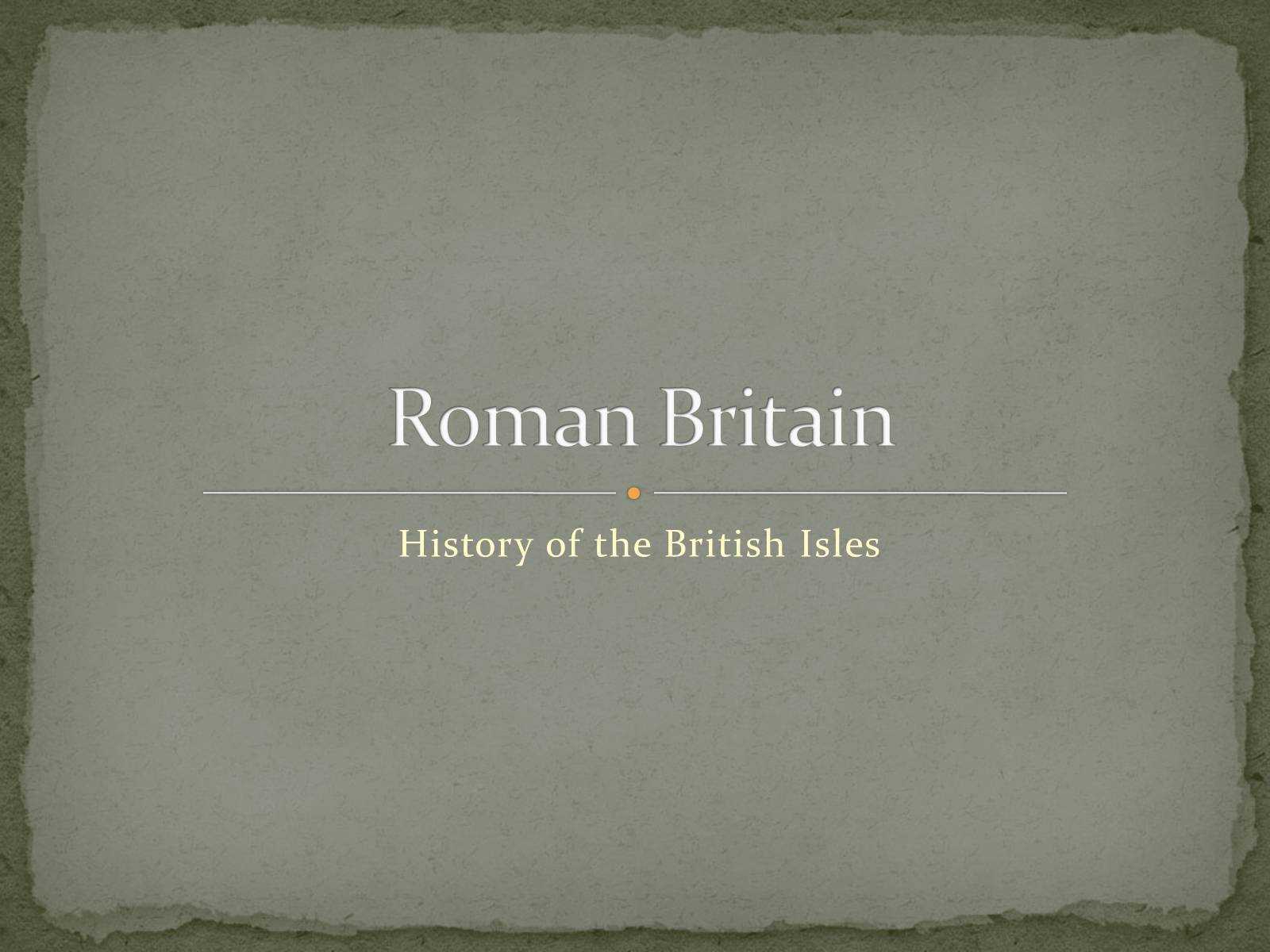
History of the British Isles
Roman Britain
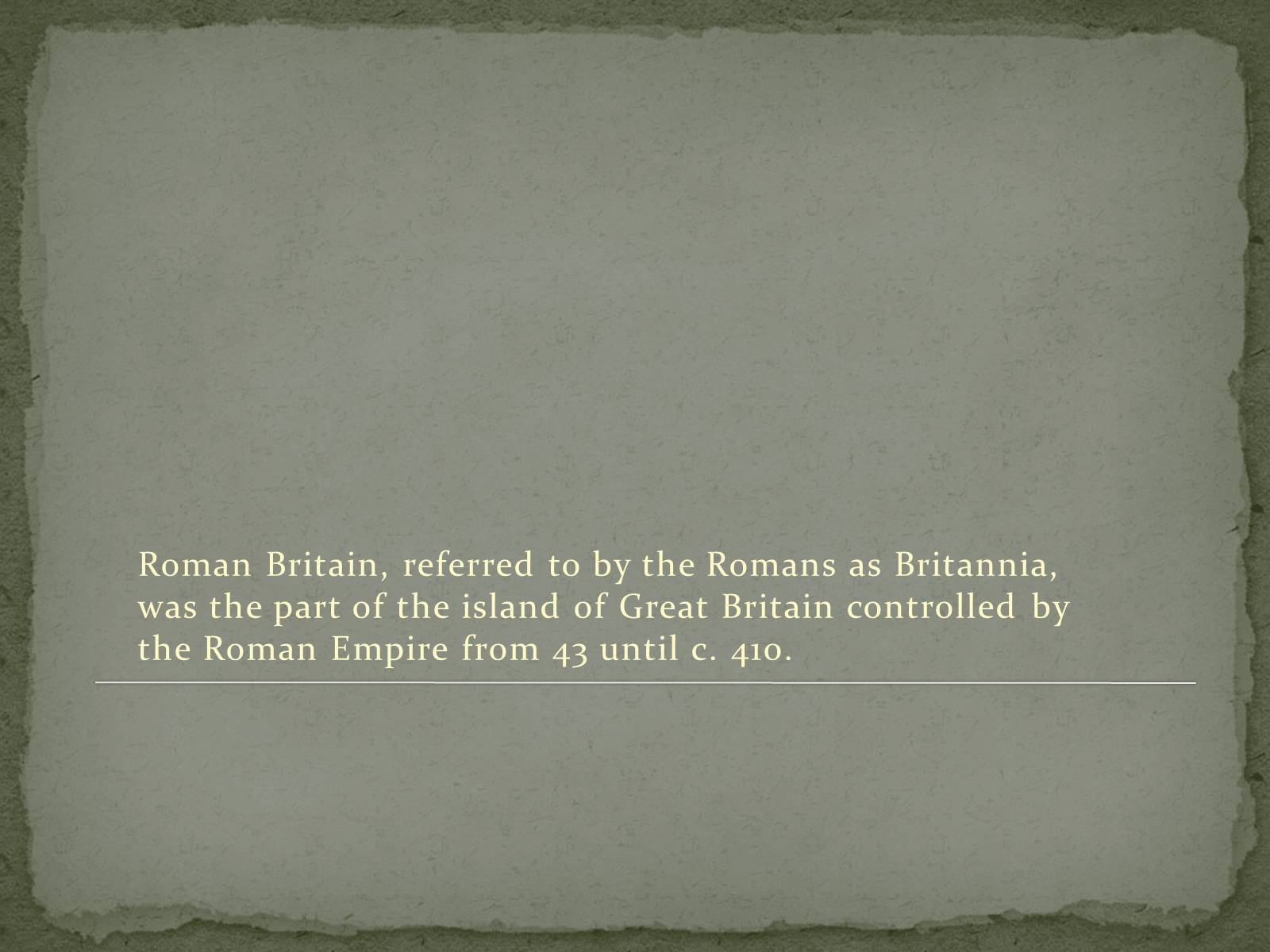
Roman Britain, referred to by the Romans as Britannia, was the part of the island of Great Britain controlled by the Roman Empire from 43 until c. 410.
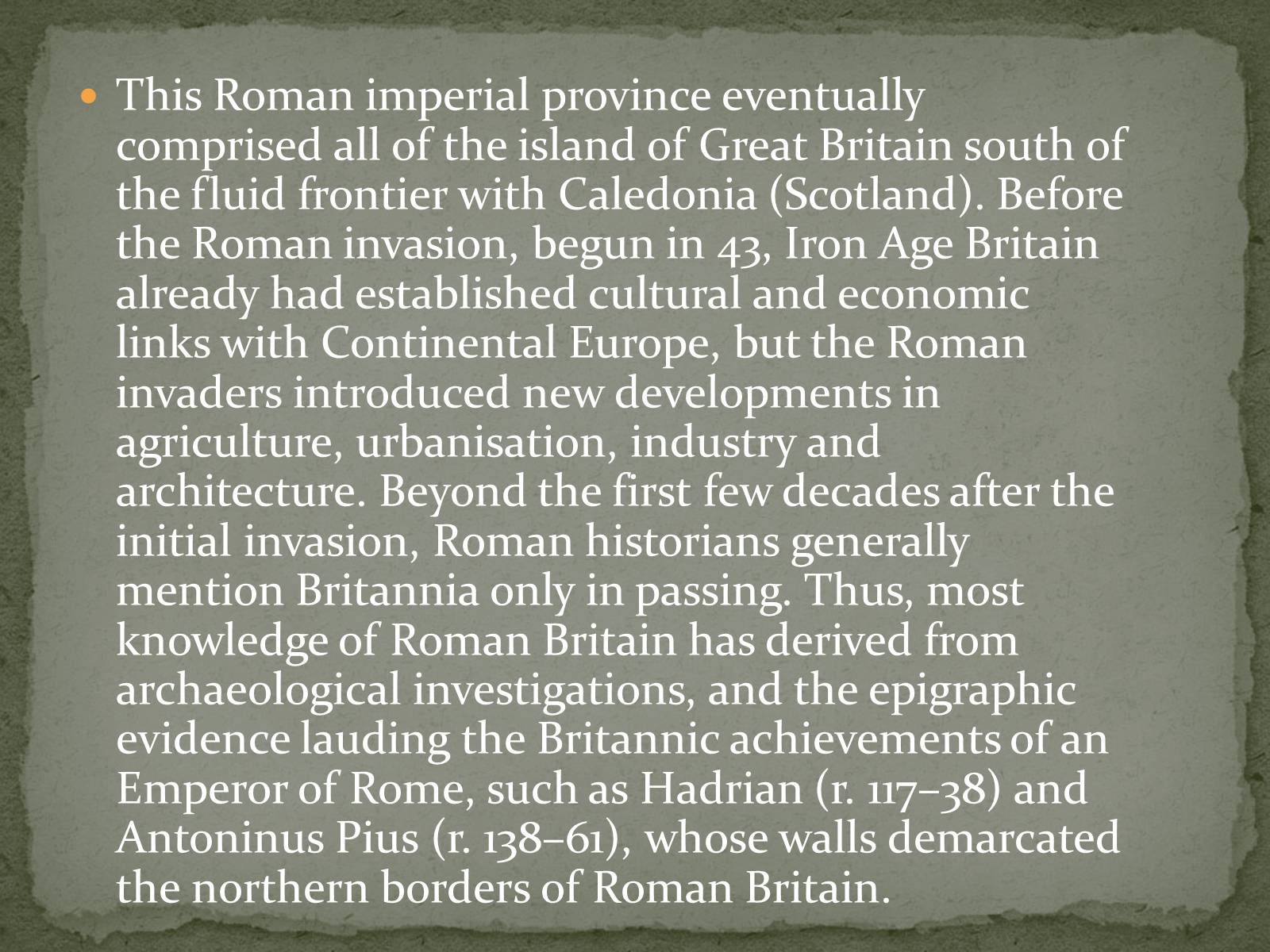
This Roman imperial province eventually comprised all of the island of Great Britain south of the fluid frontier with Caledonia (Scotland). Before the Roman invasion, begun in 43, Iron Age Britain already had established cultural and economic links with Continental Europe, but the Roman invaders introduced new developments in agriculture, urbanisation, industry and architecture. Beyond the first few decades after the initial invasion, Roman historians generally mention Britannia only in passing. Thus, most knowledge of Roman Britain has derived from archaeological investigations, and the epigraphic evidence lauding the Britannic achievements of an Emperor of Rome, such as Hadrian (r. 117–38) and Antoninus Pius (r. 138–61), whose walls demarcated the northern borders of Roman Britain.
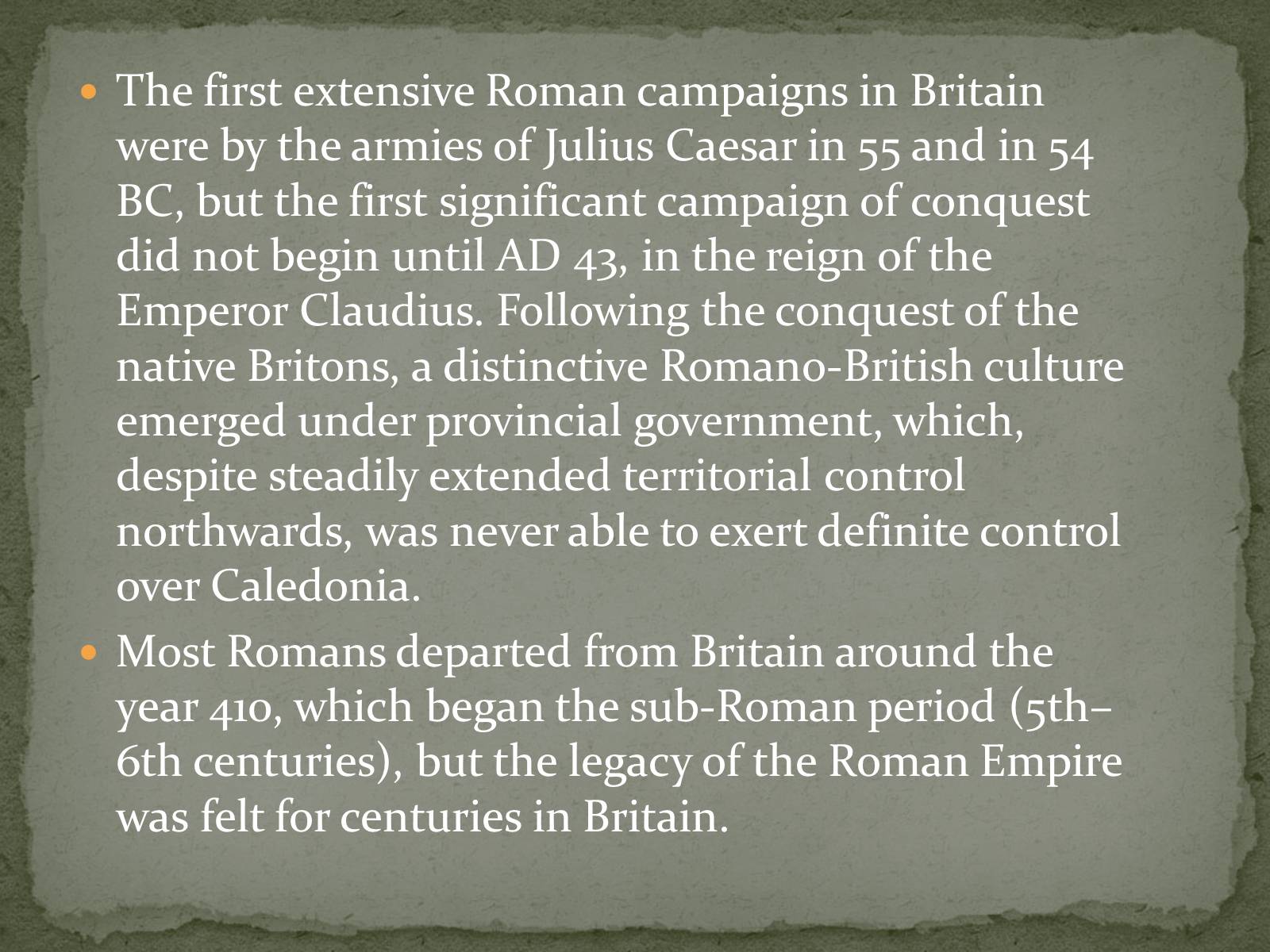
The first extensive Roman campaigns in Britain were by the armies of Julius Caesar in 55 and in 54 BC, but the first significant campaign of conquest did not begin until AD 43, in the reign of the Emperor Claudius. Following the conquest of the native Britons, a distinctive Romano-British culture emerged under provincial government, which, despite steadily extended territorial control northwards, was never able to exert definite control over Caledonia.
Most Romans departed from Britain around the year 410, which began the sub-Roman period (5th–6th centuries), but the legacy of the Roman Empire was felt for centuries in Britain.
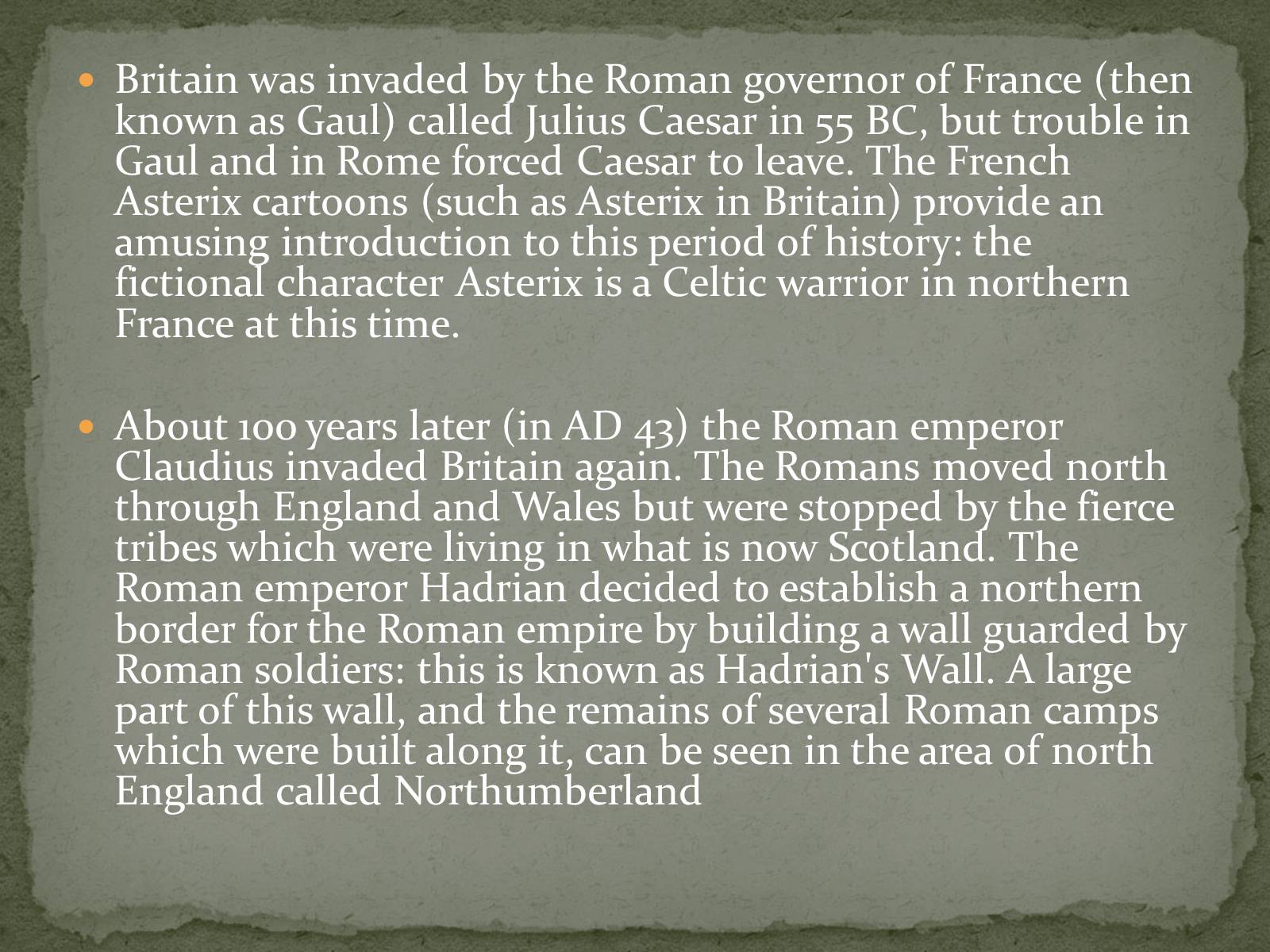
Britain was invaded by the Roman governor of France (then known as Gaul) called Julius Caesar in 55 BC, but trouble in Gaul and in Rome forced Caesar to leave. The French Asterix cartoons (such as Asterix in Britain) provide an amusing introduction to this period of history: the fictional character Asterix is a Celtic warrior in northern France at this time.
About 100 years later (in AD 43) the Roman emperor Claudius invaded Britain again. The Romans moved north through England and Wales but were stopped by the fierce tribes which were living in what is now Scotland. The Roman emperor Hadrian decided to establish a northern border for the Roman empire by building a wall guarded by Roman soldiers: this is known as Hadrian's Wall. A large part of this wall, and the remains of several Roman camps which were built along it, can be seen in the area of north England called Northumberland
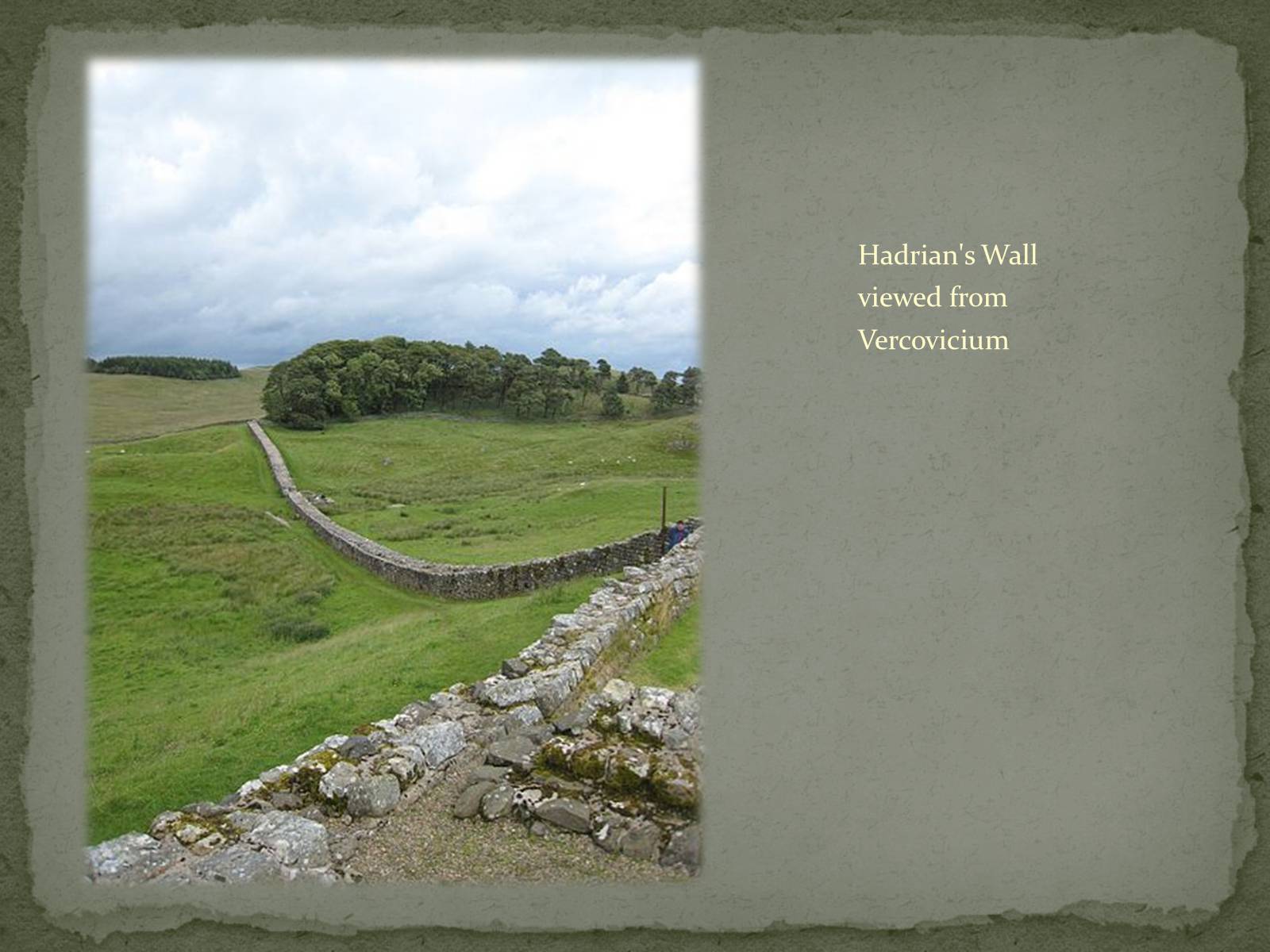
Hadrian's Wall viewed from Vercovicium
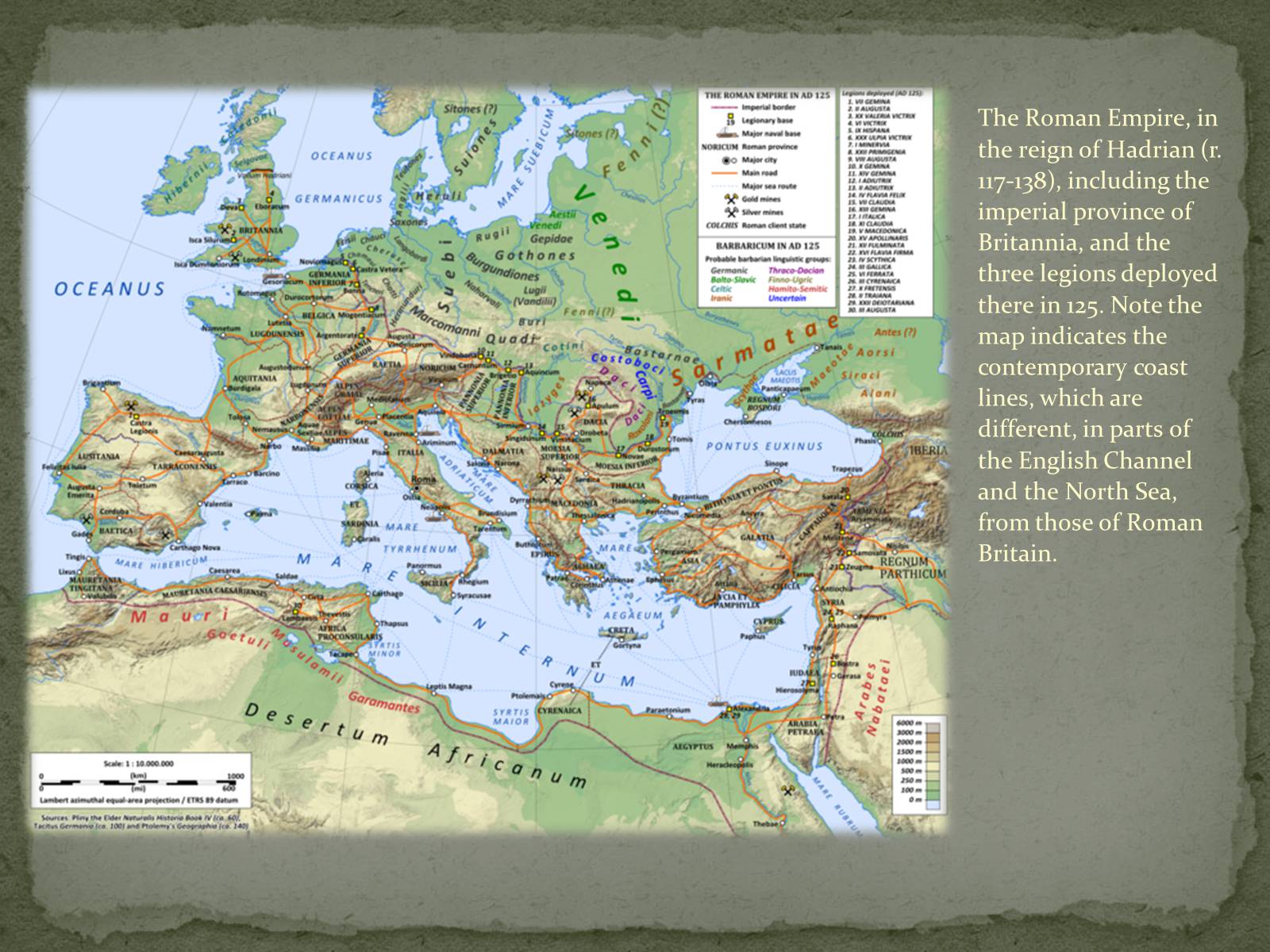
The Roman Empire, in the reign of Hadrian (r. 117-138), including the imperial province of Britannia, and the three legions deployed there in 125. Note the map indicates the contemporary coast lines, which are different, in parts of the English Channel and the North Sea, from those of Roman Britain.
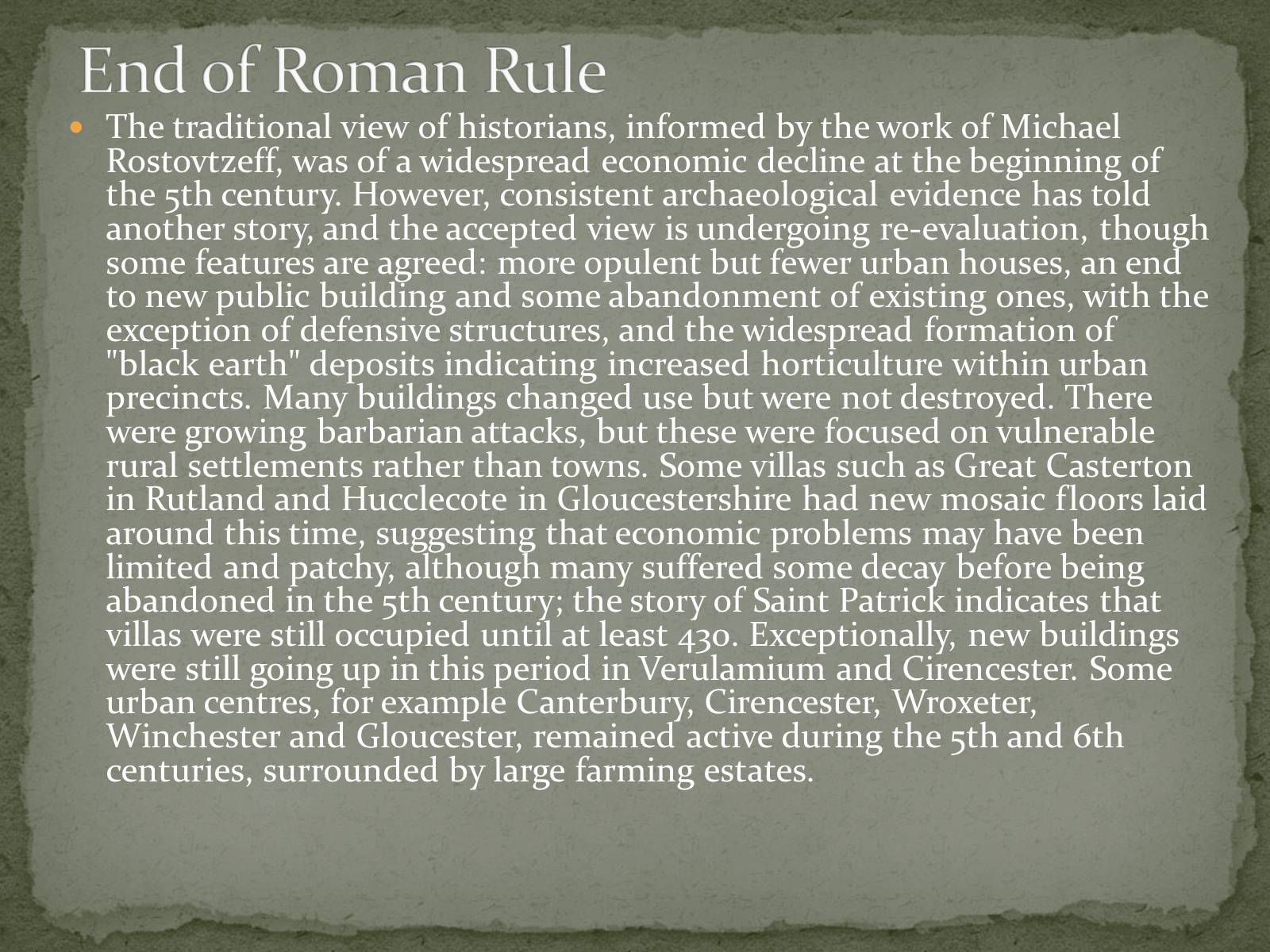
The traditional view of historians, informed by the work of Michael Rostovtzeff, was of a widespread economic decline at the beginning of the 5th century. However, consistent archaeological evidence has told another story, and the accepted view is undergoing re-evaluation, though some features are agreed: more opulent but fewer urban houses, an end to new public building and some abandonment of existing ones, with the exception of defensive structures, and the widespread formation of "black earth" deposits indicating increased horticulture within urban precincts. Many buildings changed use but were not destroyed. There were growing barbarian attacks, but these were focused on vulnerable rural settlements rather than towns. Some villas such as Great Casterton in Rutland and Hucclecote in Gloucestershire had new mosaic floors laid around this time, suggesting that economic problems may have been limited and patchy, although many suffered some decay before being abandoned in the 5th century; the story of Saint Patrick indicates that villas were still occupied until at least 430. Exceptionally, new buildings were still going up in this period in Verulamium and Cirencester. Some urban centres, for example Canterbury, Cirencester, Wroxeter, Winchester and Gloucester, remained active during the 5th and 6th centuries, surrounded by large farming estates.
End of Roman Rule